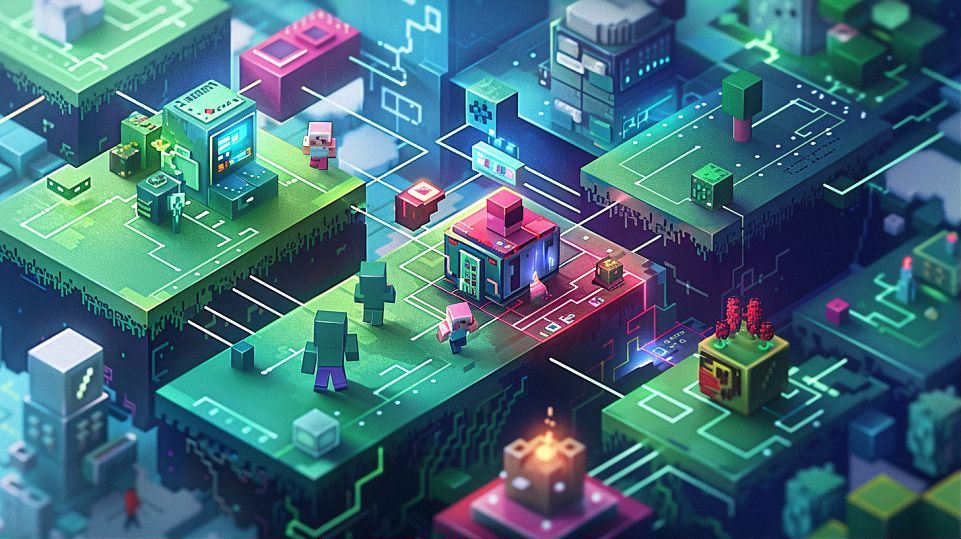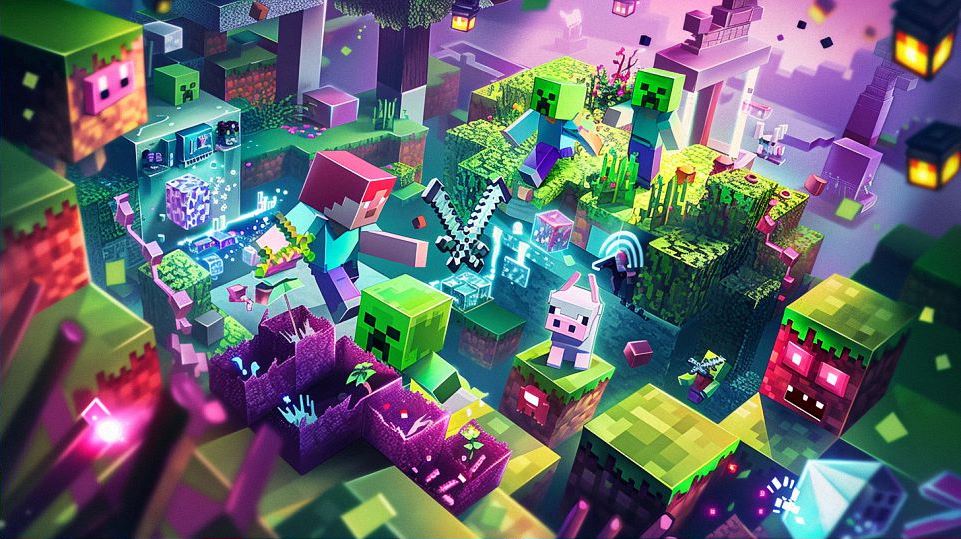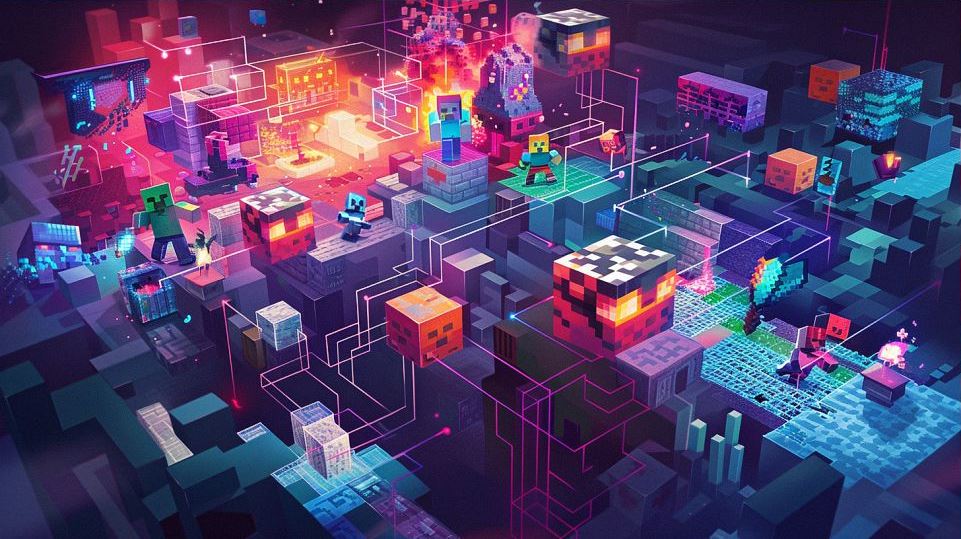How Much RAM Do You Need for Minecraft? Tips & Recommendations

Understanding Minecraft’s System Requirements
Minimum and Recommended System Requirements
When diving into Minecraft, one of the first questions that come up is: how much RAM do you need for minecraft? The answer varies based on the version of the game and how you plan to play it. Let’s break it down.
Contents
ToggleMinimum System Requirements:
For those just looking to get started, Minecraft’s minimum system requirements are quite forgiving. The game can run on as little as 2GB of RAM. This is adequate for the basic, vanilla version of the game, but performance might not be optimal.
- CPU: Intel Core i3-3210 / AMD A8-7600 APU or equivalent
- RAM: 2GB
- GPU: Intel HD Graphics 4000 or AMD Radeon R5 series with OpenGL 4.4
- Storage: At least 1GB for game core, maps, and other files
Recommended System Requirements:
If you want a smoother experience, especially if you’re adding mods or playing with friends on a server, you’ll need more robust specs.
- CPU: Intel Core i5-4690 / AMD A10-7800 or equivalent
- RAM: 4GB to 8GB
- GPU: NVIDIA GeForce 700 Series or AMD Radeon Rx 200 Series with OpenGL 4.5
- Storage: 4GB (SSD recommended for better performance)
Importance of RAM in Gaming Performance
So, why does RAM matter so much in gaming, particularly in Minecraft? RAM (Random Access Memory) plays a crucial role in determining how smoothly your game runs. It temporarily stores data that your computer needs to access quickly. In Minecraft, this includes everything from the game world to the textures and mods you’re using.
With too little RAM, Minecraft may lag, stutter, or even crash, especially when generating new chunks or loading large mods. More RAM allows your computer to handle these tasks more efficiently, providing a seamless and enjoyable gaming experience.
Benefits of More RAM:
- Reduced Lag: Smoother gameplay without interruptions.
- Faster Load Times: Quickly load into worlds and switch between tasks.
- Better Multiplayer Performance: Essential for hosting or joining servers with multiple players.
- Enhanced Mod Support: Run larger and more complex mods without performance issues.
Differences Between Java Edition and Bedrock Edition Requirements
Minecraft is available in two main versions: Java Edition and Bedrock Edition. Each has its own system requirements and performance characteristics.
Java Edition:
Java Edition is the original version of Minecraft and is highly customizable with mods and plugins. However, it is also more demanding in terms of resources.
- RAM: 4GB minimum, 8GB recommended for optimal performance, especially with mods.
- CPU: Java Edition is more CPU-intensive, needing a stronger processor to handle complex calculations.
- GPU: Requires a decent GPU to render the game world effectively.
Bedrock Edition:
Bedrock Edition is designed to run on multiple platforms, including consoles, mobile devices, and Windows 10. It is optimized for performance and often runs more smoothly on lower-end hardware.
- RAM: 2GB minimum, 4GB recommended.
- CPU: Less demanding than Java Edition, suitable for a wider range of processors.
- GPU: Optimized to work well with integrated graphics found in many laptops and tablets.
Key Differences:
- Customization: Java Edition supports extensive modding, which can significantly increase RAM usage.
- Performance: Bedrock Edition is optimized for performance and stability across various devices.
- Cross-Platform Play: Bedrock Edition allows for cross-platform multiplayer, which can affect performance if playing on lower-end devices.
Understanding these requirements helps you determine how much RAM you need for Minecraft, whether you’re building an epic modded world in Java Edition or exploring with friends on Bedrock Edition. By matching your system specs to the demands of the game, you can ensure a smooth and enjoyable Minecraft experience.

How Much RAM Do You Need for Different Minecraft Setups
Vanilla Minecraft: How Much RAM is Enough?
When playing vanilla Minecraft, you might wonder just how much RAM you need to keep everything running smoothly. The good news is that vanilla Minecraft isn’t very demanding. For the standard, unmodified version of the game, 2GB of RAM is the bare minimum you can get by with. However, for a better experience, especially if you’re generating new chunks frequently or have a lot of entities (like mobs or items) in your world, 4GB of RAM is recommended.
Why not stick with the minimum? Well, with only 2GB of RAM, you might notice some lag or stuttering, especially when your world gets more complex. This can be particularly frustrating during intense gameplay moments. Here’s what you get with 4GB of RAM:
- Smoother Gameplay: Less lag when exploring new areas or during combat.
- Faster Load Times: Worlds and chunks load quicker, reducing waiting times.
- Better Overall Performance: More headroom for background processes without impacting the game.
In essence, if you’re just building and exploring in vanilla Minecraft, 4GB of RAM will give you a smooth and enjoyable experience.
Modded Minecraft: Exploring Heavy Modpacks
Modded Minecraft is where things get a bit more demanding. Mods can significantly increase the game’s requirements, especially those that add complex machinery, new dimensions, or extensive world generation features. If you’re diving into heavy modpacks like Feed The Beast or All the Mods, the game can easily chew through RAM.
For light modding, where you might have a few performance-friendly mods installed, 4GB of RAM might still suffice. However, once you get into heavy modding, the requirements jump up. Here’s a rough guideline:
- Light Modpacks (10-20 mods): 4GB to 6GB of RAM.
- Moderate Modpacks (20-50 mods): 6GB to 8GB of RAM.
- Heavy Modpacks (50+ mods, including large packs): 8GB to 12GB of RAM.
For example, a heavy modpack like SkyFactory 4 might need at least 8GB of RAM to run smoothly, and even more if you’re multitasking or running other applications simultaneously.
Why so much RAM? Mods can add a lot of new content and mechanics, which increases the amount of data the game needs to handle. More RAM allows the game to keep all this data readily accessible, reducing lag and improving load times.
Minecraft Servers: RAM Requirements for Smooth Multiplayer
Running a Minecraft server introduces another layer of complexity. The amount of RAM you need depends on several factors: the number of players, the type of server (vanilla, modded, or with plugins), and the activities players will be doing.
Here’s a basic guideline for server RAM requirements:
- Small Server (1-10 players, vanilla): 1GB to 2GB of RAM.
- Medium Server (10-20 players, vanilla or lightly modded): 2GB to 4GB of RAM.
- Large Server (20-50 players, heavily modded or with extensive plugins): 4GB to 8GB of RAM.
- Very Large Server (50+ players, extensive modding or plugins): 8GB+ of RAM.
For example, if you’re running a vanilla server for up to 10 friends, 2GB should be enough. But, if you’re hosting a public server with lots of mods and plugins, you might need at least 8GB to ensure smooth gameplay.
Key points to consider:
- Player Count: More players mean more chunks loaded and more data processed.
- World Size: Larger worlds need more memory to keep all the data accessible.
- Mods and Plugins: These increase the complexity and data requirements of the game.
Running a server with insufficient RAM can lead to lag spikes, crashes, and unhappy players. To avoid these issues, it’s always better to overestimate your RAM needs and ensure there’s enough headroom for a smooth multiplayer experience.
In conclusion, how much RAM you need for Minecraft depends on whether you’re playing vanilla, using mods, or hosting a server. By matching your RAM to your specific setup, you can ensure a smoother, more enjoyable gaming experience.

Optimizing Minecraft Performance with the Right Amount of RAM
How to Allocate More RAM to Minecraft: A Step-by-Step Guide
So, you want to squeeze every drop of performance out of Minecraft by allocating more RAM to it? You’re in the right place. Here’s a simple guide to help you do just that:
-
Open the Minecraft Launcher: Launch the Minecraft Launcher on your computer.
-
Access Installations: Click on the “Installations” tab at the top of the launcher.
-
Select Profile: Find the profile you want to allocate more RAM to and click on “More Options.”
-
Adjust RAM Allocation: Look for the “JVM Arguments” section. You should see a line that starts with “-Xmx” followed by a number. This number represents the amount of RAM allocated to Minecraft. Increase this number to allocate more RAM. For example, changing “-Xmx2G” to “-Xmx4G” will allocate 4GB of RAM.
-
Save Changes: Once you’ve adjusted the RAM allocation, click the “Save” button to save your changes.
-
Launch Minecraft: Now, launch Minecraft using the profile you just modified, and enjoy the improved performance with more RAM at its disposal.
Best Practices for Managing RAM Usage in Minecraft
Allocating more RAM is just the first step in optimizing Minecraft performance. Here are some best practices for managing RAM usage effectively:
- Close Background Programs: Close any unnecessary programs running in the background to free up more RAM for Minecraft.
- Limit Mods: Be selective with the mods you install. More mods mean more RAM usage, so choose wisely.
- Optimize Java Settings: Ensure you’re using the latest version of Java and optimize its settings for better performance.
- Regularly Restart Minecraft: Minecraft can sometimes become memory-intensive over time. Restarting the game periodically can help refresh its memory usage.
- Monitor Performance: Use tools like Task Manager or third-party monitoring software to keep an eye on RAM usage and identify any performance issues.
By following these best practices, you can ensure that Minecraft runs smoothly without consuming excessive amounts of RAM.
Upgrading Your System: Tips for Choosing RAM for Minecraft
If you find that Minecraft still isn’t running as smoothly as you’d like, it might be time to consider upgrading your system’s RAM. Here are some tips to help you choose the right RAM for Minecraft:
-
Check System Compatibility: Make sure the RAM you choose is compatible with your system’s motherboard and processor.
-
Consider DDR4 RAM: If you’re building a new system or upgrading an older one, consider opting for DDR4 RAM, which offers faster speeds and better performance compared to DDR3.
-
Choose Sufficient Capacity: Aim for at least 8GB of RAM for a smooth Minecraft experience, especially if you plan on using mods or hosting a server. For optimal performance, consider 16GB or more.
-
Look for High-Speed RAM: Higher-speed RAM can improve overall system performance, including faster load times and smoother gameplay in Minecraft.
-
Check Latency: Lower latency RAM can provide quicker response times, reducing lag in games like Minecraft.
By investing in the right RAM for your system, you can enjoy a seamless Minecraft experience with improved performance and stability.


